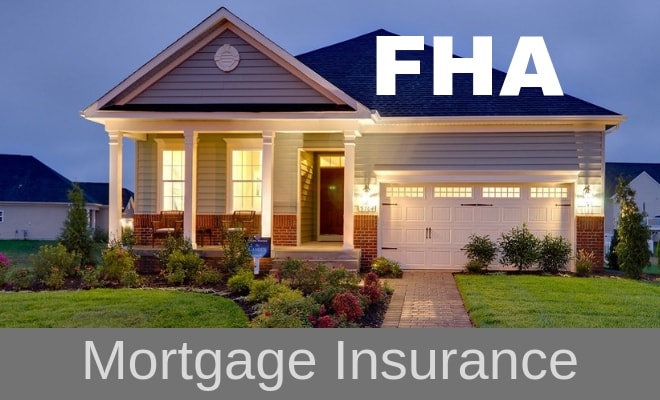Mortgage Insurance Premium (MIP) is the type of Mortgage Insurance applied to Mortgage Loans insured by the Federal Housing Administration or FHA Mortgage Loans. These FHA Loans are provided by FHA-approved mortgage lenders and are popular options for homebuyers who may not have the financial means to make large down payments or meet high credit requirements for conventional mortgage loans. Mortgage Insurance Premium (MIP) is required for all borrowers who take out FHA-backed Mortgage loans. MIP protects mortgage lenders in case borrowers can’t repay the loan.
Mortgage Insurance Premium (MIP) is the insurance policy required by the government on the FHA Mortgage Loans. Since the Down Payments on FHA Loans can be as little as 3.5% of the total price, the government requires added financial protection. The FHA Mortgage Insurance Premium (MIP) also comes in two different tires that must be paid an upfront percentage of Mortgage Insurance and an Annual Mortgage Insurance Premium (MIP). It protects the lenders in case the borrowers default on the Loans. Mortgage Insurance Premium (MIP) differs from Private Mortgage Insurance (PMI) which is reserved for conventional mortgage loans.
An FHA Loan might be right for homeowners if they have a lower credit score or a small amount of money saved for down payments. FHA Mortgage Loans are backed by the Federal Housing Administration and can allow homeowners to buy a home with a credit score as low as 580 and a Down Payment as low as 3.5%. In some cases, the borrowers can even buy a home with a credit score of 500, however, they would need to have a 10% down payment. With FHA Mortgage Loans a Homebuyer has to pay the Mortgage Insurance Premium (MIP). It is the additional payment the homebuyers make to secure the Mortgage Loan.
What Is Mortgage Insurance Premium (MIP)?
Mortgage Insurance Premium (MIP) is the type of Mortgage Insurance that is required for homebuyers who take out loans backed by the Federal Housing Administration (FHA). Unlike conventional mortgage loans, which typically only require a Mortgage Insurance Premium (MIP) if a Home Down Payment is less than 20% of the purchase price, all FHA Mortgage Loans require a Mortgage Insurance Premium (MIP). FHA-backed lenders use Mortgage Insurance Premiums (MIP) to protect against high-risk borrowers who are more likely to default on Mortgage Loans. Mortgage Insurance Premium (MIP) is the additional fee the homebuyers pay to protect the lenders in case they default on FHA Mortgage Loans. FHA MIP is beneficial to homebuyers because, without it, mortgage lenders would likely require a much larger Down Payment in order to qualify for Mortgage Loans.

How Does Mortgage Insurance Premium (MIP) Work?
Mortgage Insurance Premium (MIP) for FHA Mortgage Loans called MIP is a tool lenders use to protect themselves against borrowers who default. Ultimately, these premiums are paid by homebuyers who take out an FHA Loan instead of Conventional Mortgage Loans or another type of Loan Product. Generally, Mortgage Insurance Premium (MIP) is paid in two different tires one is an upfront mortgage insurance premium that equals 1.75% of the loan amount and the second is an annual premium that can range from 0.15% to 0.75% of the outstanding loan balance. Once the annual Mortgage Insurance Premium (MIP) amount is calculated by the mortgage lenders, it becomes part of the mortgage and gets paid as borrowers make their monthly housing payments.
How Much Does Mortgage Insurance Premium (MIP) Cost?
The Mortgage Insurance Premium (MIP) will involve two payments an upfront premium and an additional annual payment. The amount the homebuyers will pay for both depends upon the Loan amount.
- Upfront Mortgage Insurance Premium (MIP): The Upfront MIP Payment will be equal to 1.75% of the total value of the loan. The Upfront Mortgage Insurance Premium (MIP) is often paid as a part of closing costs. However, it also can generally be rolled into the loan cost and paid monthly if the borrowers do not have the cash to pay it all upfront.
- Annual Mortgage Insurance Premium (MIP): The Annual Mortgage Insurance Premium (MIP) costs will vary depending on the Loan-to-value ratio (LTV), the size of the Down Payment, and the length of the Mortgage Term. The Mortgage Lenders calculate the annual payment as a percentage of the base value loan. Most FHA Lenders add annual Mortgage Insurance premiums (MIP) to homeowners’ monthly Mortgage Payments. To find out how much the homebuyers will pay every month, they need to apply with their lenders. Once the borrowers are initially approved they will receive the loan estimate with their monthly mortgage payment and annual MIP.
Pros and Cons of Mortgage Insurance Premium (MIP)
Here are some upsides and downsides of Mortgage Insurance Premium (MIP):
Pros:
- FHA Loans require down payments as low as 3.5% while paying Mortgage Insurance Premiums (MIP) may not seem ideal.
- FHA Loans allow credit scores as low as 580 with a down payment of 3.5% and borrowers can buy a home with a credit score as low as 500 if they have a down payment of at least 10%.
- The annual component of Mortgage Insurance Premium (MIP) may cost less than private mortgage insurance (PMI) on conventional mortgages, which can be as high as 0.22% to 2.25% of the mortgage balance each year.
Cons:
- The Mortgage Insurance Premium (MIP) has both upfront and annual payment requirements, which add to the cost of buying a home with an FHA Loan.
- Unlike Private Mortgage Insurance (PMI) which can be skipped altogether, Mortgage Insurance Premium (MIP) on FHA loans applies no matter what.
- Homeowners cannot get Mortgage Insurance Premium (MIP) removed from a home loan after they have a certain amount of equity.
How To Avoid Mortgage Insurance Premium (MIP)?
If homebuyers use FHA Mortgage Loan programs then they can’t avoid the Mortgage Insurance Premium (MIP). All FHA Mortgage Loans involve Mortgage Insurance, either for the life of the loan or for a set number of years. However, homebuyers can avoid Mortgage Insurance Premiums (MIP) by following these steps:
- Obtaining a lender-paid Mortgage Insurance (LPMI) Loan: An LPMI loan can be an option if the homebuyers are not willing to make a 20 percent down payment. With a lender-paid Mortgage Insurance (LPMI) Loan, the Lender covers the Private Mortgage Insurance (PMI) in exchange for higher interest rates.
- Exploring Piggyback Loan: With Piggyback Loan, homeowners make a 10% down payment and then get a second mortgage to add another 10% to their down payments. The homebuyers wind up with a 20% down payment overall, avoiding PMI, but they will have to repay two loans.
- Looking into special programs: Some programs allow homebuyers to make a low down payment without PMI. These range from VA Loans to programs directly from major banks and lenders. Many are geared to first-time homebuyers.
Frequently Asked Questions (FAQs)
Question 1: How To Calculate Mortgage Insurance Premium (MIP)?
Answer: To obtain the amount of monthly premiums, simply divide monthly insurance premiums by 12.
Question 2: How Do you get rid of Mortgage Insurance Premium (MIP)?
Answer: For any FHA Loan taken out after June 2013, the only way to eliminate the Mortgage Insurance Premium (MIP) is to pay off the loan. Refinancing the FHA Loans to Non-FHA Loans will pay off the loan and get rid of Mortgage Insurance Premium (MIP).
Question 3: How Long Do you have to pay the Mortgage Insurance Premium (MIP)?
Answer: Before 2013, Mortgage Insurance Premiums (MIP) worked similarly to the Private Mortgage Insurance (PMI) that homebuyers pay on Conventional Mortgage Loans. Once reaching the 22% equity on a home, a conventional mortgage lender automatically cancels the PMI. Today’s, FHA Mortgage Lenders no longer Cancel Mortgage Insurance Premiums (MIP) once the homeowners reach a certain home equity percentage.
Question 4: Is Mortgage Insurance required for other Mortgage types such as USDA Loans or VA Loans?
Answer: Neither USDA Loans nor VA Loans require mortgage insurance. However, because each mortgage does allow a low or even no Down Payment, additional costs and fees are set in place to protect lenders from the risk of borrowers defaulting on their loans.
Question 5: How To Cancel Mortgage Insurance Premium (MIP)?
Answer: A Homeowner cannot cancel Mortgage Insurance Premium (MIP) payments on an FHA Mortgage Loan. However, if They put at least 10% down, They will only need to pay the Mortgage Insurance Premium (MIP) for the first 11 years. But keep in mind, if they put less than 10% down, they will pay the Mortgage Insurance Premium (MIP) for the entire life of the loan.
The Bottom Lines
The Mortgage Insurance Premium (MIP) is a term used to describe the mortgage insurance coverage of a homebuyer’s forced purchase with an FHA loan. Though Mortgage Insurance Premium (MIP) can increase homebuyers’ monthly mortgage payments, it can also help make homeownership more accessible to those who can’t afford some of the high upfront costs that come with it. If a borrower considering an FHA Mortgage Loan, it’s important to weigh all the costs that will come with that loan. The homeowners may decide that Mortgage Insurance Premium (MIP) is worth being able to keep their down payment affordable, or they may prefer to wait and save their money so they can afford a mortgage insurance-free loan.
